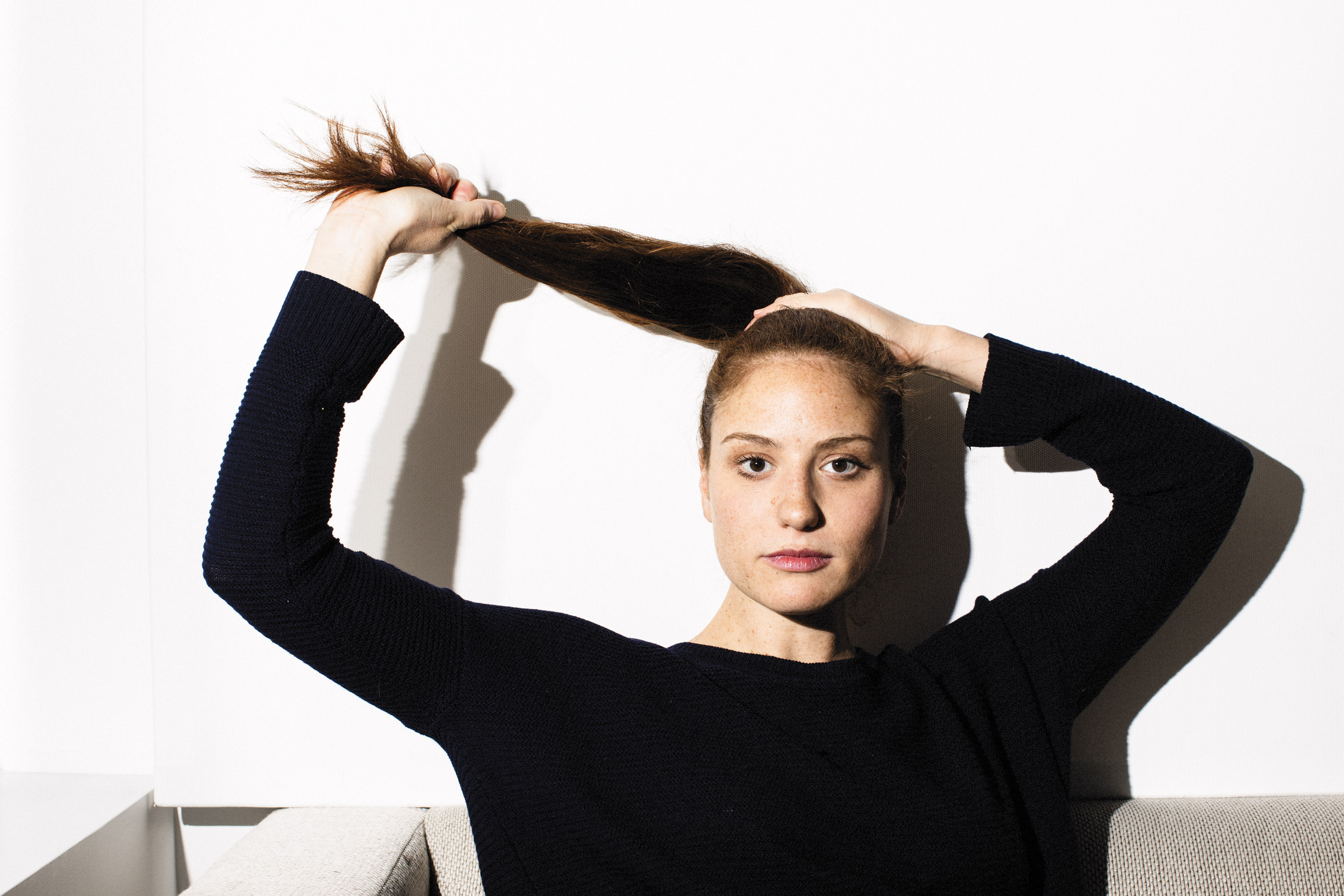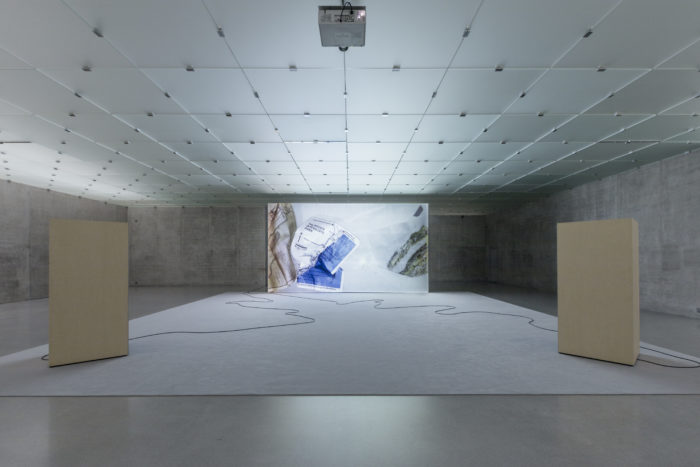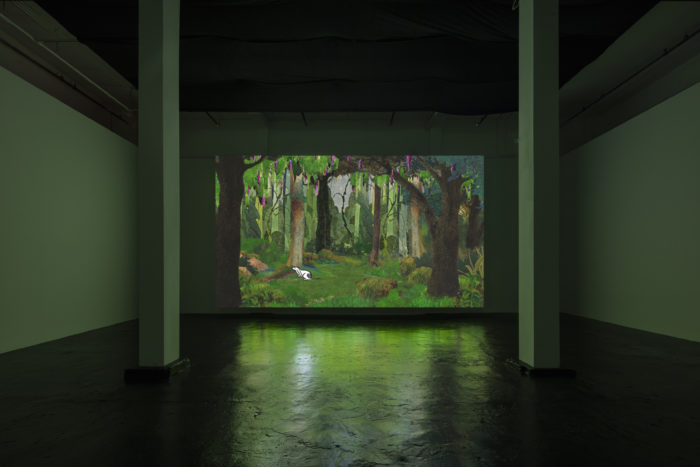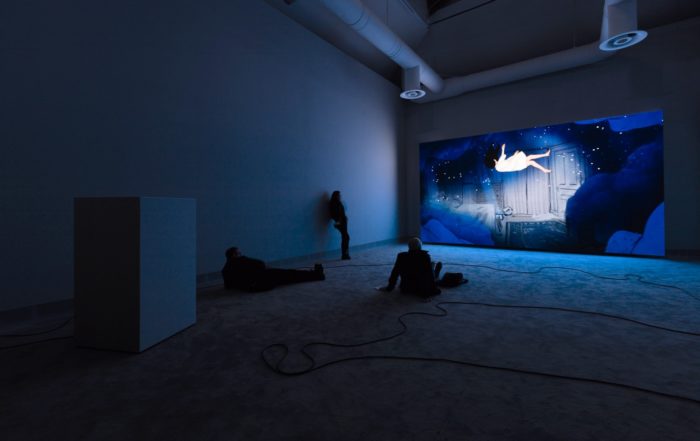
After studying for years, Rachel Rose nearly swerved off the path of becoming an artist. As an undergraduate at Yale, she trained under Robert Reed, a painter of geometric abstractions (who also taught Richard Serra and Matthew Barney), and for a time she thought she would follow in his footsteps. However, by the time she got to graduate school, at Columbia, Rose had grown wary of the self-reflexive formalism of abstraction; she no longer wanted to spend her life concerned with, what she called during an artist talk at the Nasher Sculpture Center, the “minor issues of color, composition and the history of painting.” From the vantage point of abstraction, she couldn’t see “how art could be political or change the world,” as she puts it to me, and so she began to think she wanted to become a documentary filmmaker. It was only with Sitting Feeding Sleeping (2013), her first mature video installation, which she began in her final year at Columbia, that Rose hit upon an artistic structure that could let in the world and its problems.
She recounts this evolution while sitting on a cream-colored sofa before a cream-colored rug in the office that serves as her studio in Downtown New York. Relentlessly monochrome, the space is narrow and tidy, with neat rows of binders and books on shelves and a long white table that almost covers the floor. Rose herself is warm, relaxed and exceptionally thoughtful. Taped to one of the white walls are pages from a script, on the other various images, all for a project co-commissioned by the Philadelphia Museum of Art and the Fondazione Sandretto Re Rebaudengo in Turin, Italy, as part of a new time-based media initiative. When it opens on May 1 in Philadelphia, her as-yet-untitled project will be Rose’s most ambitious undertaking to date, requiring some two years to complete, which is double the time taken by her previous projects.

There is an irony to Rose’s development. Although she eschews the painter’s studio for the filmmaker’s office, she has never actually abandoned formalism. She teases out and focuses on each of the elements of video installation, from time and color to where the audience will view the piece and the proportions of the rug upon which they will sit. But, she is quick to point out, her stringencies are not reflexive as in abstract painting, but rather a means of engaging with life, a way of capturing her feelings about it. The impetus for Sitting Feeding Sleeping, for example, was her desire to connect feelings of apathy and depression with real-world locations: in that case a zoo, a cryogenics lab and a robotics perception lab. Yet what distinguishes the work from a documentary is, in part, how Rose’s interest in the formal elements of surface and cadence, rather than the need to impart information, propels its forward movement.
Each of her works has presented a specific technical challenge, and when necessary Rose enlists the aid of collaborators to help her master these hurdles. For instance, in Palisades in Palisades (2014) she employed sophisticated editing techniques that cause one scene to resolve into another in a manner that she likens to trompe l’oeil. For Lake Valley (2016) Rose took up animation. Each of the surfaces in it were taken from children’s books but were, as she explains, applied “to objects that they wouldn’t ordinarily be on: maybe the floor is made of paper or a shirt is made of animal skin or spaghetti is made of someone’s hair.” She tends also to deploy sound in a way that is, as she says, “related to some kind of formal premise within the edit.” By using foleys (everyday sound effects) incorrectly—when an animal gets up from the floor and stretches its back, you hear a jacket being taken off—the sounds in Lake Valley, for example, are misaligned in the same way that the surfaces are.

Rose thinks less like a painter than like a poet, for whom formal constriction intensifies the chaotic or amorphous feelings of emotion, just as a spigot concentrates the flow of water, increasing its power. Erica Battle, the curator who has been working with Rose on the Philadelphia Museum of Art commission, points out that the artist’s deployment of sound contributes greatly to her work’s emotional impact. She mentions how, in Everything and More (2015), Aretha Franklin’s voice is familiar and nostalgic, much like the digital treatment of the images, which at times recall a psychedelic light show while also evoking the strangeness and wonder of the cosmos.
Set at the end of the 16th and the beginning of the 17th century in agrarian England, Rose’s current project has entailed numerous technical difficulties: working with actors, writing a script, transforming its words into iambic pentameter, creating a narrative. None of which she’d ever tried before. “It focuses,” she says, “on witch trials and land enclosure.” To shoot it, she used Plymouth Plantation in Massachusetts, which is a living history museum, as a set.

As a director, says Battle, Rose is a natural collaborator, able to shift easily between her own intuitions and the expertise offered by her director of photography and her assistant director. “What was interesting to me,” Battle continues, “was how well Rachel understood how the mechanics of making the film informed what she got from it. She never lost sight of how all these aspects—the script, the storyboarded shots, the sound—come together.”
The curator also explains that one of the reasons the commissioners selected Rose was that she’s at “pivotal moment in her career.” The project Battle helped realize may in fact prove more pivotal than she imagined. Asked which artists have influenced her, Rose cites only filmmakers: Paul Thomas Anderson, Martin McDonagh, Stanley Kubrick, Alfred Hitchcock. Might she once again consider turning away from art, this time to make a feature film? “Definitely!” Rose says. “I would love to.”



